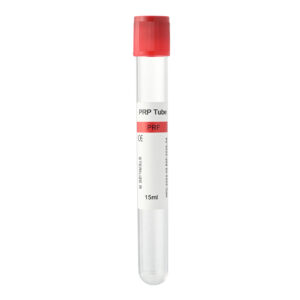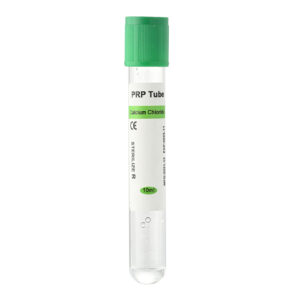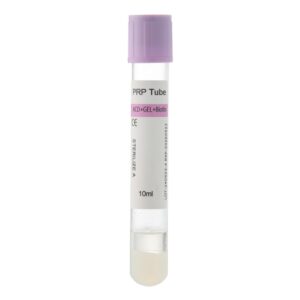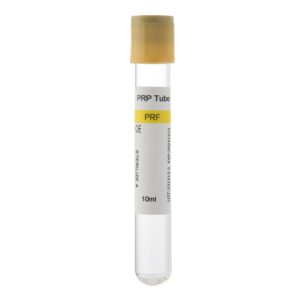A laboratory centrifuge is a device that separates substances in a mixture by rapidly rotating them to generate centrifugal force. This instrument plays a crucial role in various fields, such as biology, chemistry, and medicine, especially in cell separation, blood component analysis, and molecular extraction.
The core principle of the centrifuge is to use centrifugal force to separate sample components based on differences in their density. This separation method is efficient and precise and provides reliable experimental data across different research domains. As a result, laboratory centrifuges hold an essential position in scientific research, clinical diagnostics, and manufacturing processes.
How Does a Laboratory Centrifuge Work?
A centrifuge works by generating centrifugal force through high-speed rotation. When the centrifuge’s rotor spins, the liquid or solid components in the sample are subjected to centrifugal force. The strength of this force depends on the rotor’s speed and the sample’s position within the rotor. Centrifuge speed is commonly measured in revolutions per minute (RPM).
As the centrifuge operates, heavier components experience stronger centrifugal forces and move toward the bottom of the container, while lighter components remain at the top. The rate at which components settle depends on their density, allowing the centrifuge to separate them efficiently. By adjusting the speed, time, and centrifugal force, researchers can precisely control the separation process to obtain the desired outcome.
Main Types of Laboratory Centrifuges
Benchtop Centrifuge
Benchtop centrifuges are small-scale devices commonly used in routine laboratory applications. These centrifuges are ideal for handling small-volume samples and are widely used for cell separation and blood component analysis. Benchtop centrifuges are known for their ease of use and compact size, making them essential equipment in many laboratories.
High-Speed Centrifuge
High-speed centrifuges offer faster rotational speeds than benchtop models, making them suitable for more delicate separation tasks. These centrifuges are typically used in fields such as cell culture, genomics, and protein analysis, where higher precision is required. They allow researchers to separate complex mixtures more efficiently in less time.
Ultracentrifuge
Ultracentrifuges are advanced centrifuges capable of achieving extremely high rotational speeds, generating powerful centrifugal forces. These machines are essential in specialized research areas, including virology, subcellular component separation, and nanoparticle analysis. Ultracentrifuges are designed to maintain stability at high speeds and often include sophisticated temperature control systems to ensure sample integrity during separation.
Refrigerated Centrifuge
Refrigerated centrifuges operate at low temperatures, preventing samples from degrading due to heat buildup during the centrifugation process. This is especially important in biological experiments involving proteins, enzymes, or other temperature-sensitive samples. Refrigerated centrifuges preserve the quality of samples and enhance separation accuracy, particularly in protein extraction and cell separation.
Applications of Laboratory Centrifuge
Laboratory centrifuges have a wide range of applications across various industries. The following are some key areas where centrifuges play an integral role:
Biology and Medicine
In biology and medicine, centrifuges are used for blood separation, cell culture, and nucleic acid extraction. In clinical hematology, centrifuges separate blood components like plasma, serum, and red blood cells for further analysis. Centrifuges are also critical in preparing platelet-rich plasma (PRP), which is used for tissue regeneration and other medical treatments.
Genomics and Molecular Biology
Centrifuges are essential tools in genomics for extracting and purifying DNA, RNA, and proteins. Researchers can use centrifugal force to remove cell debris and other impurities, ensuring high-quality nucleic acids and proteins for downstream analysis. Centrifuges are also widely used in high-throughput sequencing, gene cloning, and other molecular biology techniques.
Chemistry and Materials Science
In chemistry, centrifuges are used to separate different chemical components from mixtures. In materials science, centrifuges help separate nanoparticles, polymers, and other micro-scale substances, particularly in preparing high-performance materials and nanomaterials.
Food and Environmental Testing
Centrifuges are also employed in food quality control and environmental monitoring. They separate liquids and solids in food samples to detect contaminants, while in environmental testing, centrifuges are used to isolate fine particles from water or soil samples for pollutant analysis.
How to Choose the Right Laboratory Centrifuge
When selecting a laboratory centrifuge, consider the following factors:
Sample Type and Processing Needs
Different experiments and sample types require different types of centrifuges. If high separation precision is needed, a high-speed or ultracentrifuge may be necessary. If the sample is temperature-sensitive, a refrigerated centrifuge is ideal.
Capacity and Speed
The capacity of a centrifuge determines how much sample it can handle at once, while the speed determines its separation efficiency. For large-scale experiments, choose a centrifuge with higher capacity and faster speeds. For tasks requiring higher separation forces, select a high-speed or ultracentrifuge.
Rotor Type
Centrifuge rotors come in different types, including fixed-angle, swinging-bucket, and vertical rotors. Each rotor type suits specific separation needs, so selecting the right type is critical to achieving optimal results.
Safety and Ease of Use
Safety features, such as automatic balancing systems and overload protection, are crucial, especially when working with high speeds or temperatures. Additionally, consider the centrifuge’s user-friendliness and ease of maintenance when selecting.
Conclusion
The laboratory centrifuge is vital in various scientific fields, from life sciences to chemistry and medicine. By generating centrifugal force through high-speed rotation, centrifuges enable the precise separation of sample components. Understanding centrifuges’ working principles, types, and applications helps researchers select the right equipment for their experiments, ensuring efficient and accurate results. Whether you are conducting basic research or advanced medical diagnostics, a reliable centrifuge is essential for successful outcomes.





